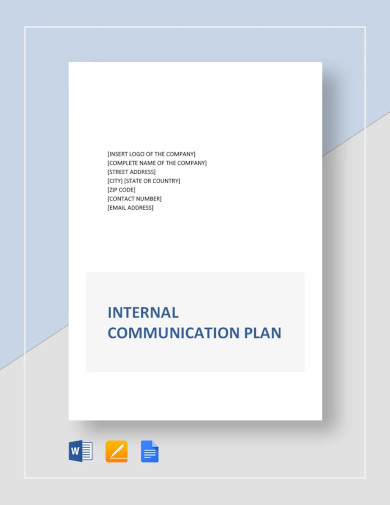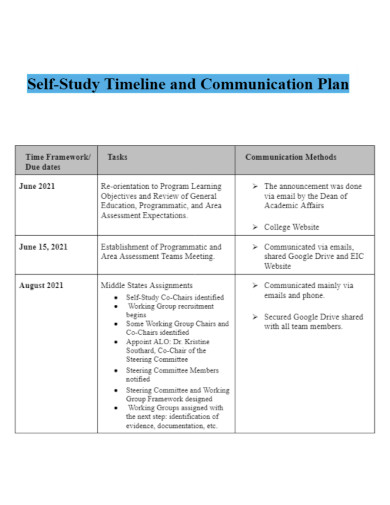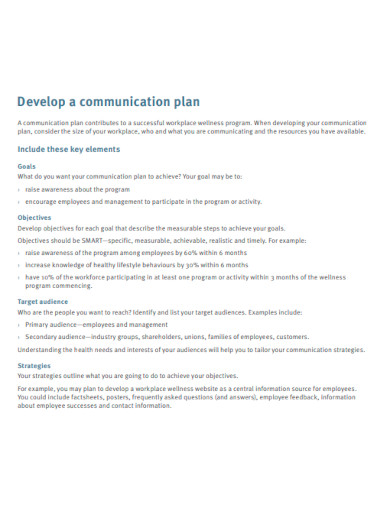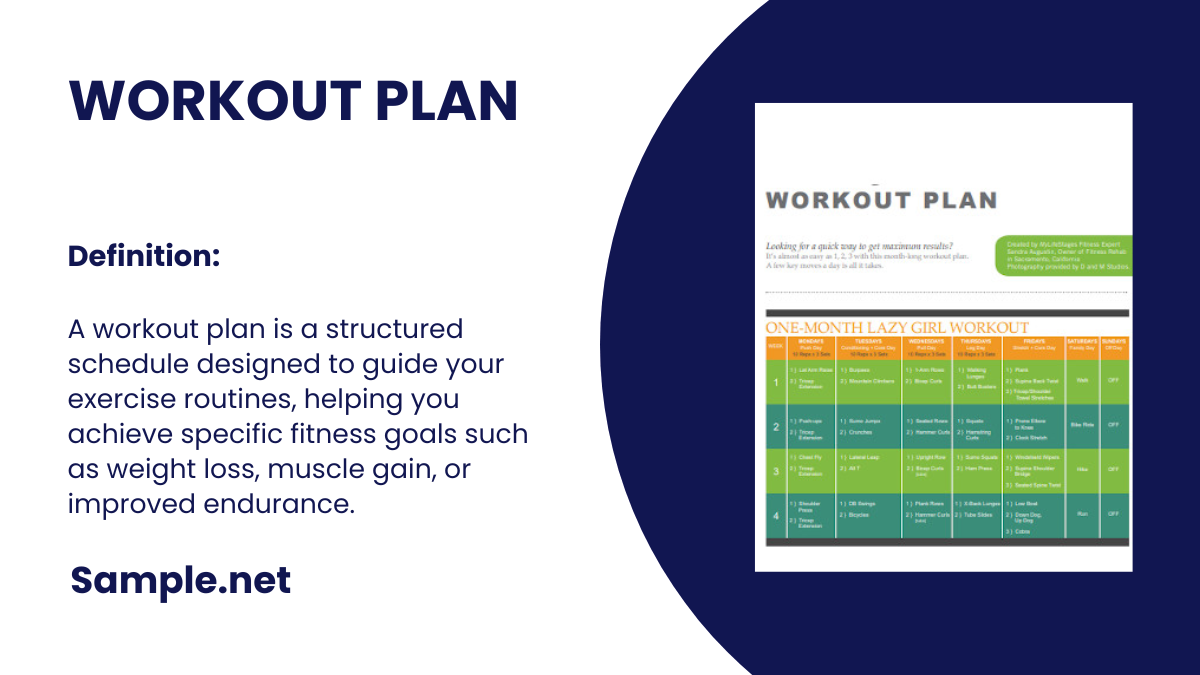An Agriculture Business Plan serves as a roadmap for setting up, managing, and expanding an agricultural venture. It outlines the objectives, strategies, and resources needed for a successful operation.…
continue reading
30+ Sample Communication Plan
-

Communication Plan Gantt Chart Template
download now -

Communication Plan Mind Map Template
download now -

Deployment Communication Plan Template
download now -

Strategic Communication Plan Template
download now -

Internal Communication Plan Template
download now -

Communication Plan Template
download now -

Project Communication Plan Template
download now -

Sample Communication Plan
download now -

Change Communication Plan
download now -

Marketing Communication Plan
download now -

Visual Communication Study Plan
download now -

Stakeholder and Communications Engagement Plan
download now -

Vendor Communication Plan
download now -

Industry Communication Plan
download now -

Business Communication Plan
download now -

Construction Communication Plan
download now -

Matrix Communication Plan
download now -

Timeline Communication Plan for Self Study
download now -

General Communication Plan
download now -

Communication Plan Tool
download now -

School Communication Plan
download now -

Team Communication Plan
download now -

Communication Plan Workbook
download now -

Communication Program Plan
download now -

Social Media Communications Plan
download now -

Implementation Communication Plan
download now -

Communication Plan Evaluation
download now -

Communication Action Plan
download now -

Develop a Communication Plan
download now -

Communication Plan Example
download now -

Emergency Communication Plan
download now
What is a Communication Plan?
A communication plan is a meticulously crafted blueprint that outlines how information will be exchanged and disseminated within an organization or project. It serves as a vital compass, guiding effective communication plans for project management, change management, and internal management. This comprehensive strategic communication plan harmonizes the flow of information during critical phases. By strategically addressing organizational change and incorporating seamless communication channels in construction projects, social media, and project teams, a communication plan becomes the cornerstone of successful endeavors. It fosters corporate communication and empowers the use of strategic visual marketing through engaging infographic presentations. Ultimately, a well-designed communication plan, complete with sample plans and templates, serves as the backbone for harmonious and efficient communication, driving success in any undertaking.
Effective communication plans such as business crisis communication plans and school communication plans play a pivotal role in enhancing project management and fostering collaboration across various entities. According to a study by the Project Management Institute (PMI), projects with well-defined communication plans have a success rate of 80%, while those without one face a staggering 74% failure rate. Clear and consistent communication streamlines workflows, reduces misunderstandings, and increases overall productivity. By fostering collaboration between brands, businesses, project teams, and marketing firms, communication plans enable shared insights and diverse expertise, resulting in innovative solutions and successful project outcomes. Effective communication, as reported by a McKinsey survey, can improve productivity by 25% and employee engagement by 40%, further solidifying its significance in achieving collective goals and maximizing project success.
Types of Communication Plans
In this section, we explore a diverse range of communication plans, each meticulously tailored to address specific organizational needs and objectives. From project management plans and crisis communication plans to marketing strategies and diversity initiatives, these plans serve as powerful tools to foster collaboration, enhance productivity, and achieve success across various domains.
How to Create a Communication Plan
Unlock the secrets to crafting a powerful communication plan with this comprehensive guide. In this section, we delve into the four essential steps that pave the way for clear, impactful messaging. Learn how to define objectives, select the right channels, create compelling messages, and establish a feedback loop for seamless communication that drives success and fosters collaboration.
Step 1: Define Objectives and Stakeholders
Identify the purpose of the communication plan and the specific objectives it aims to achieve. Determine key stakeholders, including project teams, clients, employees, and external partners, and understand their unique communication needs and preferences. This step lays the foundation for tailoring the plan to address the right audience with the most relevant messages.
Step 2: Choose Communication Channels
Select appropriate communication channels based on the identified stakeholders and objectives. Consider a mix of channels such as emails, meetings, social media, intranet, or newsletters to reach the target audience effectively. Ensure the selected channels align with the nature of the messages and the preferences of the recipients for maximum impact.
Step 3: Craft Clear and Consistent Messages
Develop concise and compelling messages that convey the intended information accurately. Use language that is easy to understand and aligns with the organization’s tone and brand identity. Emphasize the benefits and outcomes, keeping messages consistent across all selected channels to reinforce the key points and avoid confusion.
Step 4: Set Timelines and Feedback Mechanisms
Establish a realistic timeline for communication activities, incorporating critical milestones and deadlines. Create opportunities for feedback and two-way communication, encouraging stakeholders to share their thoughts and concerns. Regularly assess the plan’s effectiveness and make necessary adjustments based on feedback and evolving project requirements to ensure continuous improvement.
FAQs
An effective communication plan for project management includes several key components. Firstly, it is important to identify the project stakeholders and determine their communication needs. This involves understanding who needs to be informed, consulted, or involved in the project. Secondly, the communication plan should outline the objectives and goals of the project, as well as the key messages that need to be conveyed. Clear and concise messaging is crucial for effective communication. Thirdly, the plan should define the communication channels and tools that will be used to deliver the messages. This could include meetings, emails, project management software, or other communication platforms. Additionally, the plan should establish a timeline for communication activities, ensuring that messages are delivered in a timely manner. Lastly, the plan should include a feedback mechanism to gather input and address any concerns or questions from stakeholders. Regular evaluation and adjustment of the communication plan is also essential to ensure its effectiveness throughout the project lifecycle.
Effective communication is crucial for the smooth functioning of internal management within an organization. There are several strategies that can be employed to enhance communication in this context. Firstly, it is important to establish clear channels of communication, such as regular team meetings, email updates, or project management software. This ensures that information flows freely and that everyone is on the same page. Secondly, active listening is key to effective communication. Managers should actively listen to their team members, encourage open dialogue, and provide opportunities for feedback and input. Thirdly, it is important to tailor the communication style to the needs of the audience. Different individuals may have different preferences or communication styles, so it is important to adapt accordingly. Additionally, using visual aids or other forms of non-verbal communication can help to enhance understanding and engagement. Lastly, regular and transparent communication about goals, expectations, and progress is essential for effective internal management. This helps to align everyone towards a common objective and ensures that everyone is aware of their roles and responsibilities.
Organizational change often requires adapting communication plans to effectively address the specific needs and challenges that arise during the change process. Firstly, it is important to clearly communicate the reasons for change and the expected benefits to employees and stakeholders. This helps to create a shared understanding and gain support for the change. Secondly, the communication plan should provide regular updates and progress reports to keep everyone informed about the status of the change initiative. This helps to manage expectations and reduce uncertainty. Thirdly, it is important to address any resistance or concerns that may arise during the change process. The communication plan should include strategies for addressing these issues, such as providing additional training or support, or engaging in open dialogue with those who are resistant to change. Additionally, the plan should ensure that communication is transparent and inclusive, allowing for input and feedback from employees at all levels of the organization. By adapting communication plans to address organizational change, organizations can effectively navigate the challenges that arise and ensure successful implementation of the desired changes.
What are the key components of an effective communication plan for project management?
What strategies can be employed in an effective communication plan for internal management?
How should communication plans be adapted to address organizational change effectively?
Creating an effective communication plan is fundamental for the success of any project or organization. This comprehensive guide provides valuable insights and strategies for developing a communication plan that meets the specific needs and challenges of different contexts. By identifying stakeholders, setting clear objectives, choosing appropriate channels, and fostering open dialogue, organizations can enhance collaboration, navigate change, evaluate performance, and achieve their goals. With an effective communication plan in place, businesses can foster transparency, engagement, and trust among employees and stakeholders, leading to improved outcomes and overall success. Simply download and use our sample communication plan templates and other documents for project management and other corporate purposes including business continuity policy templates and corporate management structure charts.


